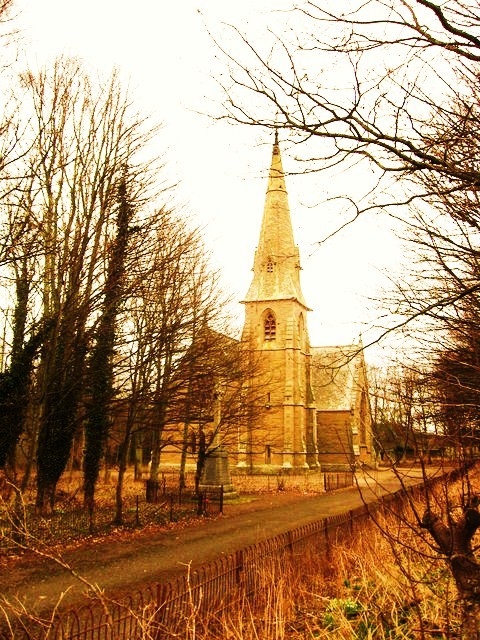Ayton Parish Church on:
[Wikipedia]
[Google]
[Amazon]
 Ayton and Burnmouth Parish Church is a member church ( sco, kirk) of the
Ayton and Burnmouth Parish Church is a member church ( sco, kirk) of the
St. Dionysius : Defending the Faith
{{Authority control Category A listed buildings in the Scottish Borders Churches in the Scottish Borders Listed churches in Scotland
 Ayton and Burnmouth Parish Church is a member church ( sco, kirk) of the
Ayton and Burnmouth Parish Church is a member church ( sco, kirk) of the Church of Scotland
The Church of Scotland ( sco, The Kirk o Scotland; gd, Eaglais na h-Alba) is the national church in Scotland.
The Church of Scotland was principally shaped by John Knox, in the Reformation of 1560, when it split from the Catholic Church ...
, serving the communities of Ayton and Burnmouth in the Scottish Borders. The church is situated on the side of the B6355 road, just off the main A1 road, south of the village centre and north-west of Berwick upon Tweed
Berwick-upon-Tweed (), sometimes known as Berwick-on-Tweed or simply Berwick, is a town and civil parish in Northumberland, England, south of the Anglo-Scottish border, and the northernmost town in England. The 2011 United Kingdom census recor ...
, at .
History
There are charters of the late 11th and early 12th centuries granting the lands of Eiton, as Ayton was then known, toColdingham Priory
Coldingham Priory was a house of Benedictine monks. It lies on the south-east coast of Scotland, in the village of Coldingham, Berwickshire. Coldingham Priory was founded in the reign of David I of Scotland, although his older brother and predec ...
. The lands were granted by King Edgar of Scotland
Edgar or Étgar mac Maíl Choluim ( Modern Gaelic: ''Eagar mac Mhaoil Chaluim''), nicknamed Probus, "the Valiant" (c. 1074 – 8 January 1107), was King of Scotland from 1097 to 1107. He was the fourth son of Malcolm III and Margaret of Wes ...
(ruled 1097–1107). By the end of the 12th century, the monks of Coldingham had built a chapel dedicated St. Dionysius. The church later received an altar dedicated to the Virgin Mary, with endowments of various acres and rigs in the Lordship of Ayton.
The old chapel, which had been extensively altered and renewed over the years up to the 18th century was, originally, a simple rectangular building, but changed to a T shape with the addition of the north aisle. Many of the early Norman features were altered or even removed in the 17th and 18th centuries.
The Chapel of St. Dionysius was an important place in medieval Scotland, it played host to several meetings of commissioners from Scotland and England, in their efforts to come to treaty, including those in 1380, 1384 and 1497. The meeting of 1497 involved the Spanish diplomat Pedro de Ayala
Don Pedro de Ayala also Pedro López Ayala (died 31 January 1513) was a 16th-century Spanish diplomat employed by Ferdinand II of Aragon and Isabella I of Castile at the courts of James IV of Scotland and Henry VII of England. His mission t ...
on behalf of James IV of Scotland with representatives of Henry VII of England
Henry VII (28 January 1457 – 21 April 1509) was King of England and Lord of Ireland from his seizure of the crown on 22 August 1485 until his death in 1509. He was the first monarch of the House of Tudor.
Henry's mother, Margaret Beauf ...
, and the outcome was a seven-year truce. St. Dionysius' Church continued as a Roman Catholic place of worship in the hands of the monks of Coldingham until the Scottish Reformation
The Scottish Reformation was the process by which Scotland broke with the Papacy and developed a predominantly Calvinist national Kirk (church), which was strongly Presbyterian in its outlook. It was part of the wider European Protestant Refor ...
, when it became part of the reformed church.
left, The kirkyard and part of the ruined St. Dionysius' Church
Post-Reformation
The old church buildings continued with several alterations and renovations (see above) until it no longer was fit for purpose. In 1864, a new church was built just outside the village, adjacent to the ancient church. The church was built by eminent 19th century architect James Maitland Wardrop, in the " First Pointed" style ofGothic architecture
Gothic architecture (or pointed architecture) is an architectural style that was prevalent in Europe from the late 12th to the 16th century, during the High and Late Middle Ages, surviving into the 17th and 18th centuries in some areas. It ...
, and is a near T-shape with a 3-stage square-plan tower. The 19th-century Ayton Parish Church is a category A listed building
In the United Kingdom, a listed building or listed structure is one that has been placed on one of the four statutory lists maintained by Historic England in England, Historic Environment Scotland in Scotland, in Wales, and the Northern Irel ...
, the highest level of protection for a historic building in Scotland, while the ruined St. Dionysius' Church is listed at category B.
List of Post-Reformation ministers
*1574 John Kent *1604 William Hog *1653 William Home *1667 John Bethune *1712 Thomas AndersonReferences
External links
St. Dionysius : Defending the Faith
{{Authority control Category A listed buildings in the Scottish Borders Churches in the Scottish Borders Listed churches in Scotland